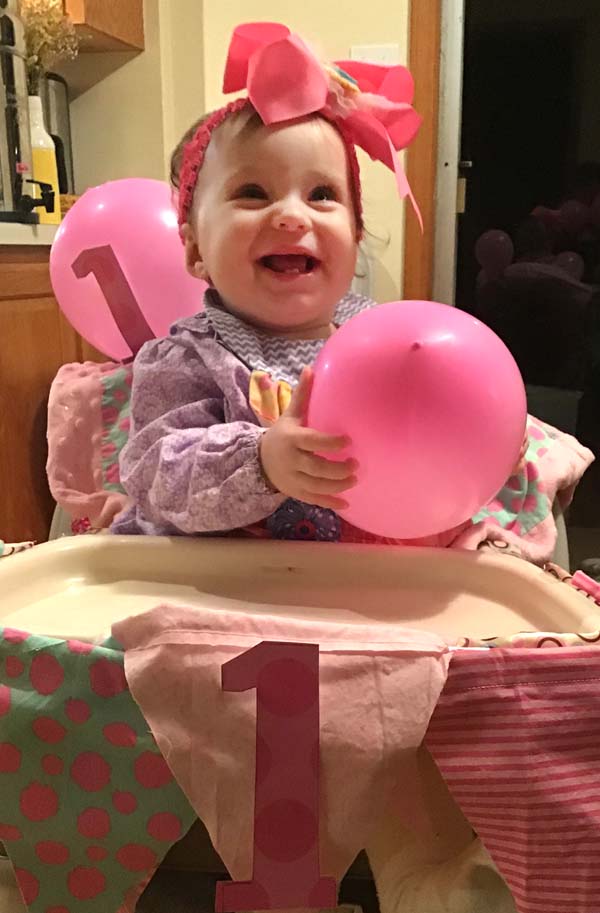 By Steve Brawner, © 2021 by Steve Brawner Communications, Inc.
By Steve Brawner, © 2021 by Steve Brawner Communications, Inc.
It’s been a challenging 12 months for all of us. For the Brawner family, it’s also been full of Hope.
Hope Renee Brawner was born one year ago at 1:10 p.m. on 1-10-20. “Renee” is French for “reborn.”
Her “old man” really is an old man – middle-aged, actually. I was 50 when she was born. Her mom was 44, and her sisters were 18 and 15. Yes, we’ve been asked by strangers if she’s our grandchild. And no, Hope was not planned. She was an unexpected and precious gift from God.
Hope’s childhood will be different from her sisters’. Her parents are older, hopefully wiser and definitely less spry. Her remaining grandparents are older, too. Her maternal grandmother has passed away. Her sisters are her second and third mothers.
Her first year occurred when the world was at war with a virus. For the first time in many decades, infectious disease has been an ever-present threat. The pandemic has lasted long enough that it’s changed life in both small and profound ways – just as life was changing when our oldest daughter was born one week after the Sept. 11 attacks.
What will those changes look like? Will Hope grow up in a world where people shake hands, or will we be bumping fists? More importantly, how long will we look upon each other suspiciously as potential disease-carriers and as members of opposing tribes? Or when this is over, will we get back to business, as we did the last time a worldwide war was won?
Our first two children were passed around to family and friends as babies. Hope doesn’t get out much, and we keep her with us when she does. She’s very pleasant and happy, but she can be a little shy around other people, at least at first. Will she be part of a generation of shy COVID babies, and will it matter long term? Or will they be well-adjusted and more family-centered than previous generations?
Life is changing in other ways. If Hope were a person of color, she would be among the first set of girl babies who could see on screen a female vice president of the United States with a similar background and skin tone. That wouldn’t have happened when I was born 51 years ago.
Regardless of when a person comes into the world, life is full of unexpected gifts and hardships. On Dec. 6, 1941, people were meeting their future spouses, having babies, and finding their callings. And then the next day Pearl Harbor happened.
So what do we humans do with the fact that life is but a vapor? We’d better take joy in the moment. Embrace hope.
Hope, her mother and her sisters are inseparable, but I can also report that she’s a bit of a daddy’s girl. And because I’m a journalist, you know I’m unbiased and objective.
I was washing dishes the night of Jan. 1 when she crawled up behind me, pulled on my pants leg, and looked at me sweetly and expectantly. I acknowledged her and returned to the dishes. She pulled on my pants leg again. Her sister offered to take her. Hope wanted Daddy.
The dishes could wait. I scooped her up and carried her to the rocking chair next to the fireplace. She was a little fussy, but she calmed down with help from her sister, her favorite stuffed bear, a pillow and a pacifier. I sang to her, terribly off-key, but she didn’t seem to mind. In a few minutes, she’d fallen asleep in my arms.
That’s always been Mommy’s job, but that night it was mine. A new year had begun, and I’d been given the gift of embracing Hope.
Related: The story of Hope’s birth.